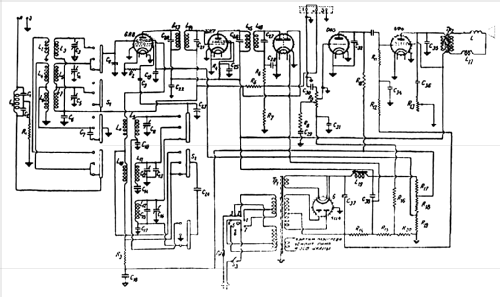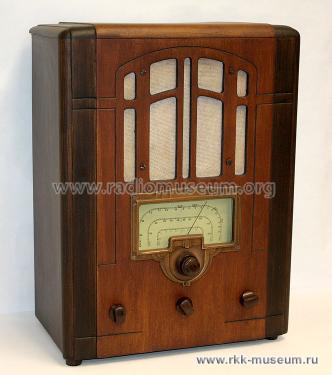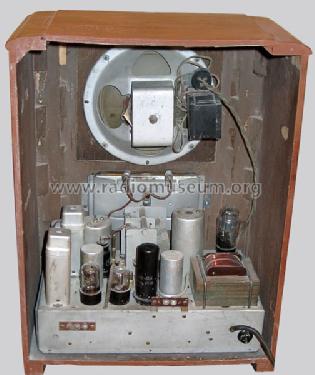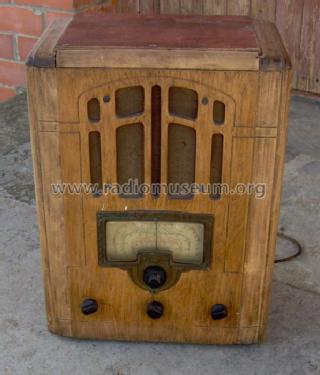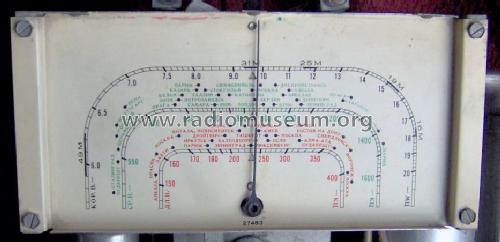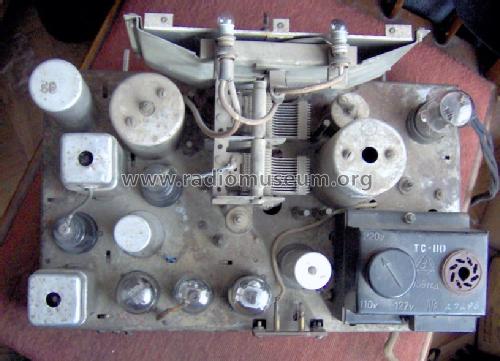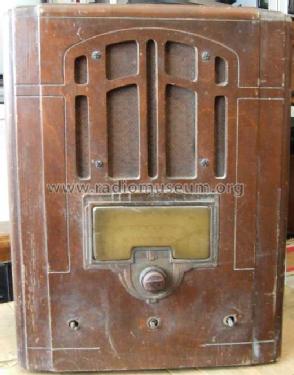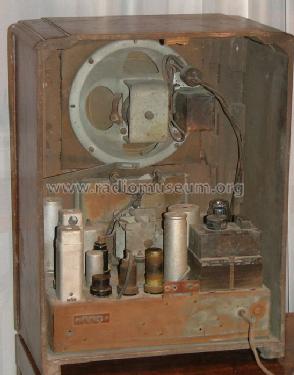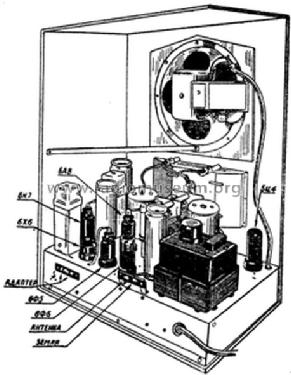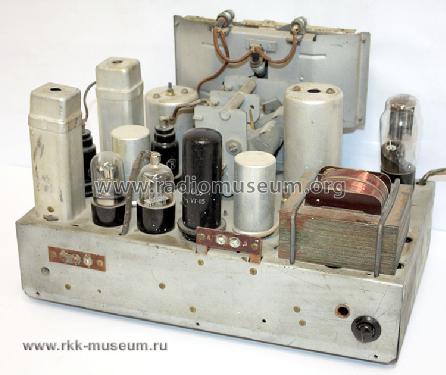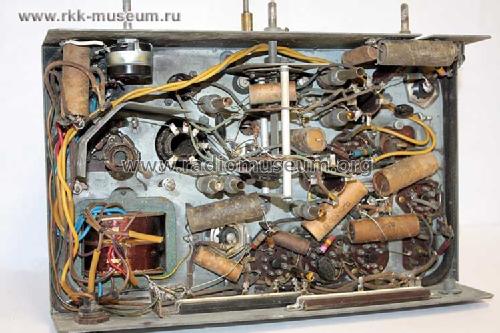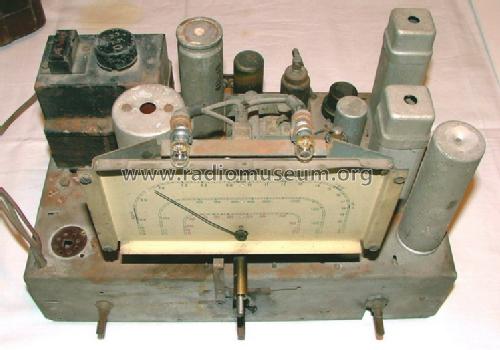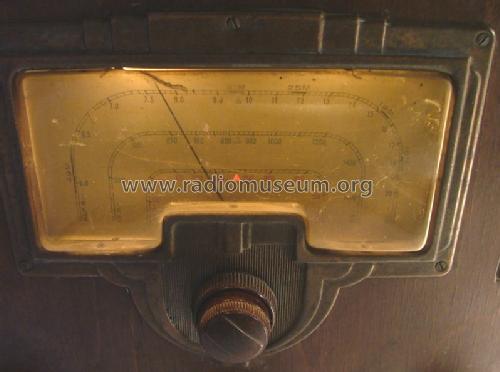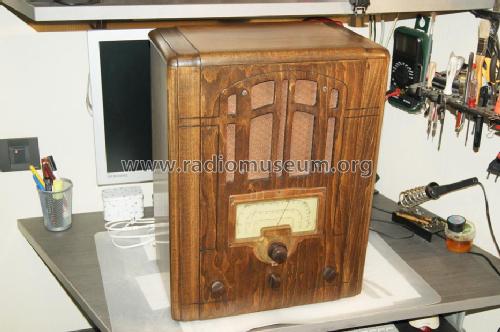6N-1 {6Н-1}
Voronezh Elektrosignal Radio Works
- Paese
- Unione Sovietica
- Produttore / Marca
- Voronezh Elektrosignal Radio Works
- Anno
- 1938–1941
- Categoria
- Radio (o sintonizzatore del dopoguerra WW2)
- Radiomuseum.org ID
- 77612
Clicca sulla miniatura dello schema per richiederlo come documento gratuito.
- Numero di tubi
- 6
- Principio generale
- Supereterodina (in generale); ZF/IF 460 kHz
- Gamme d'onda
- Onde medie (OM), lunghe (OL) e corte (OC).
- Tensioni di funzionamento
- Alimentazione a corrente alternata (CA) / 110, 127, 220 Volt
- Altoparlante
- AP din.(bobina mobile) - elettrodinamico o a magnete permanente (?). / Ø 20 cm = 7.9 inch
- Potenza d'uscita
- 2.5 W (qualità ignota)
- Materiali
- Mobile in legno
- Radiomuseum.org
- Modello: 6N-1 {6Н-1} - Voronezh Elektrosignal Radio
- Forma
- Soprammobile verticale (sviluppato in altezza; no cattedrale, sin decorazioni).
- Dimensioni (LxAxP)
- 380 x 480 x 225 mm / 15 x 18.9 x 8.9 inch
- Annotazioni
-
The design of 6N-1 and 9N-4 broadcast receivers was a team effort of RCA engineers of Camden, NJ, and Soviet visitors to the USA in 1936-37. The prototype for 6N-1 was RCA 6T2 desktop model of 1936. Production of 6N-1 started in 1938 at "Elektrosignal" Radio Works in Voronezh, USSR, first as screw driving assembly of components supplied by RCA. Mass production of 6N-1 became possible after American equipment was started in the USSR for metal vacuum tubes, composition resistors and mica capacitors. Despite relatively short production period (early 1938 till June, 1941), the total amount of 6N-1 receivers exceeded 150,000 pieces. Russian spelling of 6N-1 is "6H-1".
- Bibliografia
- Past SU magazine RADIOFRONT Nr.09 -1938, Nr.08 -1939
- Letteratura / Schemi (1)
- E.A. Levitin. Radio Receiver's Handbook. Moscow, 1946 (in Russian)
- Altri modelli
-
In questo link sono elencati 30 modelli, di cui 28 con immagini e 22 con schemi.
Elenco delle radio e altri apparecchi della Voronezh Elektrosignal Radio Works
Collezioni
Il modello fa parte delle collezioni dei seguenti membri.
Discussioni nel forum su questo modello: Voronezh: 6N-1 {6Н-1}
Argomenti: 1 | Articoli: 3
Hallo,
habe gestern auf der AREB dieses Radio 2x gesehen.
Es war bei keinem die Rückwand dabei. Dafür sagten mehrere Leute, das dieses Gerät keine
Rückwand gehabt habe. Kann das sein ?
Zumindest ist auch kein Bild der Rückwand im Radiomuseum vorhanden.
Viele Grüße
Klaus Bayer
Klaus Bayer, 09.Oct.16
